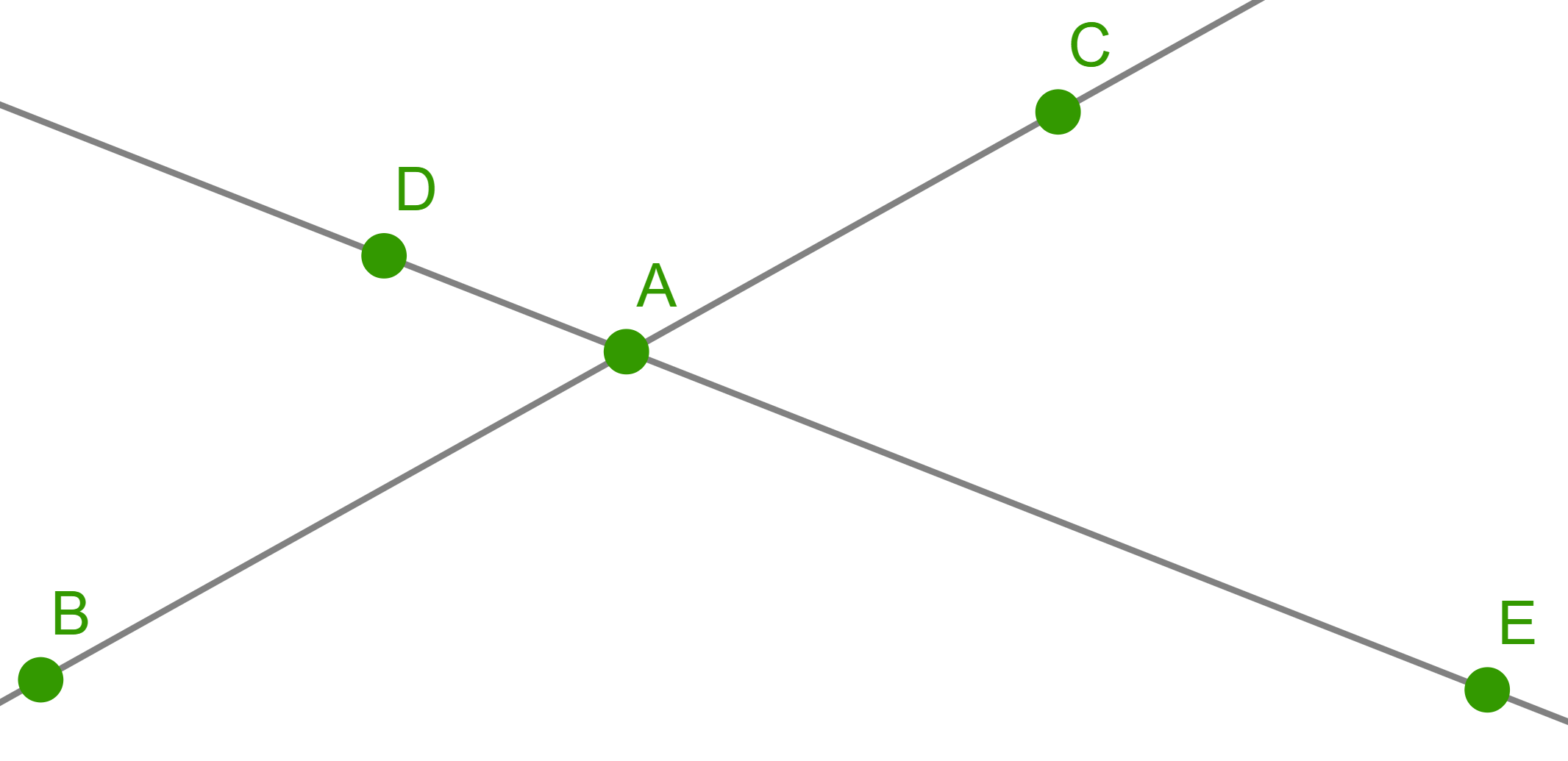Problems
On an island, there are knights who always tell the truth, and liars who always lie. What question would you need to ask the islander to find out if he has a crocodile at home?
What is there a greater number of: cats, except for those cats that are not named Fluffy, or animals named Fluffy, except for those that are not cats?
Five oaks are planted along two linear park alleys in such a way that
there are three oaks along each alley, see picture. Where should we
plant the sixth oak so that it will be possible to lay two more linear
alleys, along each of which there would also be three oak trees
growing?

The smell of a flowering lavender plant diffuses through a radius of 20 m around it. How many lavender plants must be planted along a straight 400m path so that the smell of the lavender reaches every point on the path.
The angle at the top of a crane is \(20^{\circ}\). How will the magnitude of this angle change when looking at the crane with binoculars which triple the size of everything?
What is the minimum number of squares that need to be marked on a chessboard, so that:
1) There are no horizontally, vertically, or diagonally adjacent marked squares.
2) Adding any single new marked square breaks rule 1.
We are given 101 rectangles with integer-length sides that do not exceed 100.
Prove that amongst them there will be three rectangles \(A, B, C\), which will fit completely inside one another so that \(A \subset B \subset C\).
Ben noticed that all 25 of his classmates have a different number of friends in this class. How many friends does Ben have?
Initially, on each cell of a \(1 \times n\) board a checker is placed. The first move allows you to move any checker onto an adjacent cell (one of the two, if the checker is not on the edge), so that a column of two pieces is formed. Then one can move each column in any direction by as many cells as there are checkers in it (within the board); if the column is on a non-empty cell, it is placed on a column standing there and unites with it. Prove that in \(n - 1\) moves you can collect all of the checkers on one square.
A square is cut by 18 straight lines, 9 of which are parallel to one side of the square and the other 9 parallel to the other – perpendicular to the first 9 – dividing the square into 100 rectangles. It turns out that exactly 9 of these rectangles are squares. Prove that among these 9 squares there will be two that are identical.